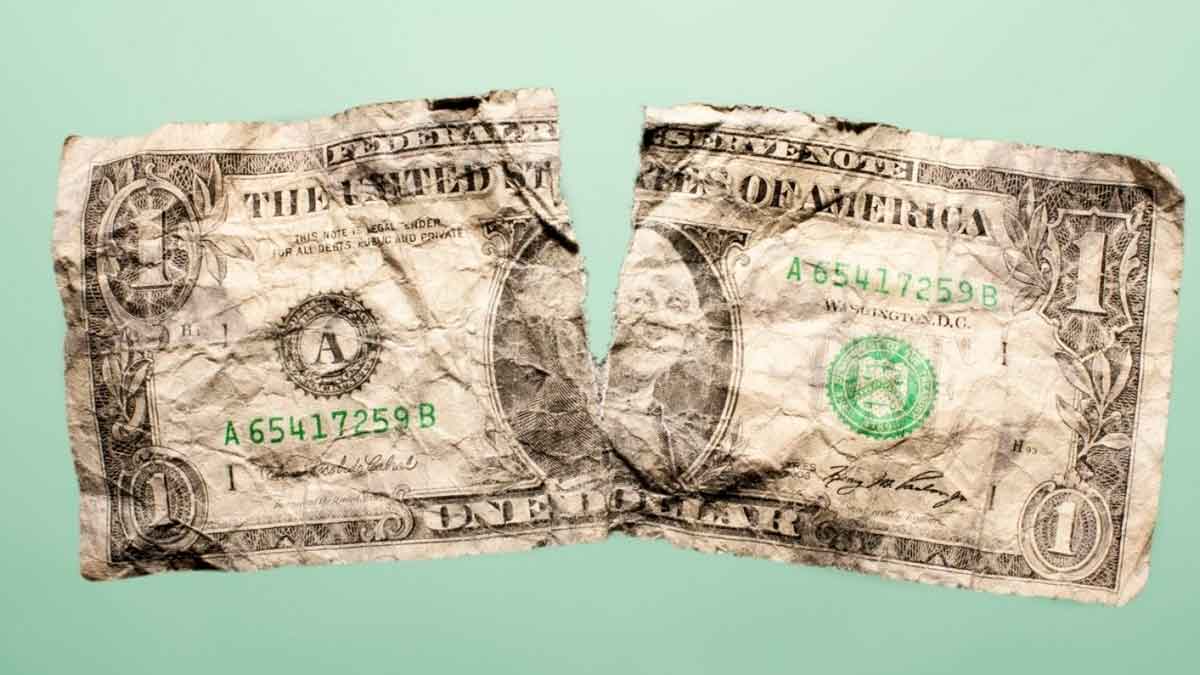The United States has launched a program whose sole purpose is to replace deteriorated dollar bills with new versions. These bills will come with innovative security measures to prevent counterfeiting, a phenomenon that has become very important in recent years. In this context, many stores will stop receiving some banknotes, so the authorities recommend replacing them.
The initiative is promoted by the Bureau of Engraving and Printing. In addition, it has the collaboration of the Secret Service and the Committee for the Prevention of Advanced Counterfeiting. With this strategy, they seek to strengthen the security of the monetary system, preserve confidence in the U.S. currency and combat fraud.
Bills that will no longer be accepted in the U.S.
According to what has been announced by the authorities, banknotes that show noticeable deterioration will no longer be accepted in banks, stores and ATMs. This measure includes:
- Banknotes that are discolored or have worn shades.
- Specimens with trimmed edges or damaged corners.
- Dollars affected by exposure to humidity or high temperatures.
- Banknotes with visible marks that compromise their handling.
Major retail chains, such as Dollar Tree, Target and Walmart, have confirmed their adherence to this regulation. They have also pledged not to accept damaged banknotes. The U.S. Bureau of Engraving and Printing will offer a free public service for the exchange of partially or completely destroyed banknotes.
Each year, the U.S. Treasury Department processes about 30,000 requests to replace mutilated banknotes. This represents an amount of approximately $30 million.
The Bureau of Engraving and Printing’s redesign plan
In addition to withdrawing from circulation the bills in poor condition, the U.S. authorities are anticipating another strategy: to implement a redesign plan for the dollars. The new issues will feature improvements in the denominations of 2, 5, 10, 20, 50 and 100 dollars. And although this change will be gradual, travelers and citizens will have to be attentive to this, since the change will directly affect the daily use of the currency.
Security measures to identify a counterfeit dollar
While the initiative seeks to improve security, it is crucial that citizens have the tools to detect a counterfeit bill. Therefore, the BEP will implement security measures so that they can verify whether or not it is an original specimen, such as:
- Security threads: they will be visible when the bill is held up against the light. The USA inscription will appear.
- 3D stripe: changes design when the bill is tilted.
- Color-changing ink: this is something that will be noticeable in the lower right corner.
- Watermark: this will be noticeable against the light.
- Microprints: you will find these around the designs.
- Embossed printing: this can be felt by touch.
Dollar upgrade schedule, according to the BEP
Regarding the redesign of the dollars, the Government has published an official schedule with the dates on which the updates of these banknotes will enter circulation. These are the denominations and in what year they will begin to take effect in the United States:
- $50 bill (2028): will include advanced anti-counterfeiting systems.
- 20 dollar bill (2030): will have state-of-the-art technology to prevent duplication.
- Other bills, such as the $5 and $10, will have further improvements.
How do I exchange my damaged bills?
If you have deteriorated banknotes, you will have to exchange them in official financial institutions. It should be noted that banks do accept these bills, although their authenticity must not be compromised. The U.S. Bureau of Engraving and Printing (BEP) shared through its web platform the procedure to follow to exchange mutilated coins. Basically, the system consists of sending the damaged bills for evaluation and the banking institution will send you a check with the equivalent amount after validation.
Once you have finished reading this article, you can continue reading other news about economy to be informed about the latest publications of this digital newspaper.







